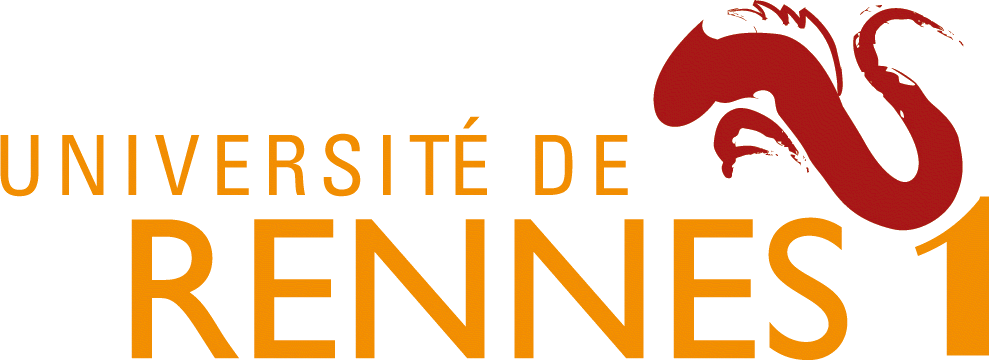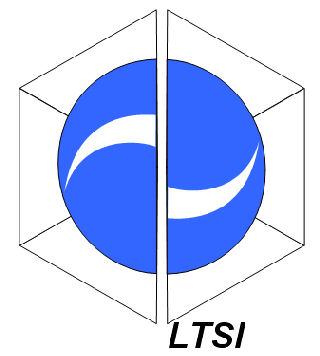News
Members
Publications
Software / Data
Job offers
Images / Videos
Collaborations
Conferences
Lab meetings: "Les partages de midi"
Practical information
Members Area
Next conferences we are in …


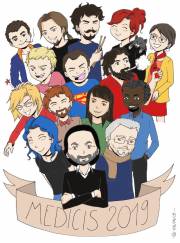
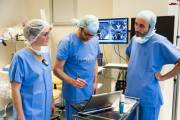
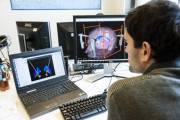
This shows you the differences between two versions of the page.
| Next revision | Previous revision Next revision Both sides next revision | ||
|
activities:theme3:research_areas [2010/11/12 17:22] flalys created |
activities:theme3:research_areas [2010/11/15 14:17] bgibaud |
||
|---|---|---|---|
| Line 1: | Line 1: | ||
| - | + | === Sharing of data and sharing of processing tools in neuroimaging === | |
| - | === Minimally invasive therapies in Neurosurgery (CAS-S) === | + | |
| \\ | \\ | ||
| **Major contributions** | **Major contributions** | ||
| + | The NeuroLOG Project (2007-2010) was supported by ANR (under the “Software Technology” program). The overall goal was to set up a computer infrastructure to facilitate the sharing of neuroimaging data, as well as image processing tools, in a distributed and heterogeneous environment. The consortium gathered expertise coming from several complementary domains of expertise: image processing in neuroimaging, workflows and GRID computing, ontology development and ontology-based mediation. A key aspect of the project led by VisAGeS was the design of an application ontology (called OntoNeuroLOG), which provides a common language to share the semantics of the shared resources (i.e. neuroimaging data, on the one hand, and image processing tools, modeled as services, on the other hand). This was achieved according to a methodology called OntoSpec, designed by the Gilles Kassel’s group in Amiens. OntoNeuroLOG is a major result of the project: it is a multi-layer application ontology, made of several core and domain ontologies, articulated around a foundational ontology called DOLCE, which provides the basic entities and basic design principles. VisAGeS was also leader of a workpackage dealing with the distributed data storage. This was implemented using two components of the NeuroLOG server: a “metadata manager” providing database query services, and a “data manager” ensuring the distributed management of image files. The metadata manager relies on mediation services provided by “Data Federator” (Business Objects, now SAP). Besides, semantic services, i.e. services that process a semantic representation of metadata (instances of the ontology’s classes, represented in RDF) were developed to support enhanced metadata querying as well as reasoning about image processing. An application testbed is currently in operation; it includes several image databases located in four sites (Paris Pitié-Salpétrière-IRCM, Rennes VisAGeS, Grenoble GIN, and INRIA Asclepios at Sophia-Antipolis). | ||
| **Current related projects** | **Current related projects** | ||
| - | * [[activities:theme1:projects:DBS:index | Model based computer assisted surgery for Deep Brain Stimulation]]\\ | + | * [[http://www.irisa.fr/visages/demo/Neurobase/ |Neurobase (2002-2006) ]] |
| - | * Cochlear Implants | + | |
| + | * [[http://neurolog.polytech.unice.fr/doku.php | Neurolog project (2007-2010)]] | ||
| + | |||
| + | * [[http://shanoir.org/ | Shanoir project (2007-...) ]] | ||
| - | === Intraoperative brain deformations in neurosurgery (IGNS) === | + | * [[http://www.creatis.insa-lyon.fr/vip/node/2 | Virtual Imaging Platform (VIP) (2009-...) ]] |
| + | |||
| + | |||
| + | |||
| + | === Semantic annotation of brain anatomical structures in MRI images === | ||
| \\ | \\ | ||
| **Major contributions** | **Major contributions** | ||
| - | Our major objective within this application domain was to correct for brain deformations that occur during surgery. Neuronavigation systems make it now possible to superimpose preoperative images with the surgical field under the assumption of a rigid transformation. Nevertheless, non-rigid brain deformations, as well as brain resection, drastically limit the efficiency of such systems. The major objective here was to study and estimate brain deformations using 3D ultrasound and video information. This was performed through the integration of intraoperative 3D free-hand ultrasound and 3D intraoperative video reconstruction. The major advances in the period was to propose 1) a new 3D reconstruction framework for 3D freehand ultrasound from regular B-scans, 2) a new denoising scheme based on the adaptation of NL-Means to the Rayleigh distribution model, 3) a new rigid and non-rigid registration framework which includes a new probabilistic similarity function between MRI and Ultrasound images, and 4) a new detection, quantification and tracking of surface brain deformations from videos of the binocular microscope. We have demonstrated that millimeter deformations can be measured and corrected; with an accuracy limited to the patient to physical space registration error mainly. | + | This project aimed at exploring the feasibility of relying on symbolic knowledge provided by ontology |
| + | to assist the annotation of anatomical images. The basic assumption underlying this work is that ontologies cannot only provide a reference vocabulary to annotate images, but they can also provide | ||
| + | useful prior knowledge that may help the annotation process itself. Especially, representing topological knowledge between gyri and sulci may help identifying them, especially in presence of pathology. In his PhD work, Ammar Mechouche developed an hybrid approach to explore this idea. The system relies on prior detection of the external traces of brain sulci. Those are then used to delineate 'patches', which are closed polygons defined on the brain surface. The annotation phase combines dfferent kinds of knowledge and different reasoning techniques. The identication of gyri parts is supported by a constraint satisfaction problem reasoning, which uses the sulco-gyral ontology and an atlas of the gyri (so far the MNI SPAM database). The identification of sulci parts is performed | ||
| + | using a description logics reasoning over the ontology, extended with rules. The system was assessed | ||
| + | with both normal (10 cases) and pathological (5 cases) cases, showing tumors in the region being labeled. This assessment suggests that the system is quite robust in presence of pathology. | ||
| **Current related projects** | **Current related projects** | ||
| - | * [[activities:theme1:projects:IGNS:index | IGNS ]]\\ | + | * [[activities:theme3:projects:semantic-annotation:index | Semantic annotation in NeuroImaging ]] |

